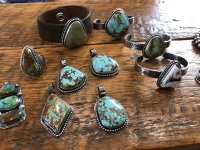Rock, poor fellas have been digging nothing but solid rock on this job. They are breaking shanks left and right over there. I’ve done a pile of em.
490 komatsu rock bucket, crack in the bucket is probably 18” long and all the way through the bucket. Material thickness is 1.5” or so. Getting the old center shank off was a PITA. never could find the weld fusion line when i gouged the old weld off that held the shank on. Ended up just washing the entire shank off with a scarfing tip, hence the rough finish on it. I smoothed it all out before putting the new shank on. Lots of old shitty weld on these buckets from the previous welder. Ignore the shitty welds. Mostly the reason I’m having to fix all these again. By end of this job I’ll probably end up replacing every shank on every bucket on this job. These messkins runnin the equipment would rather use the bucket as a hammer than using the actual hammer.
Gouge out 80% of the crack from the front, weld it up, backgouge on the back side til you are completely into good new weld metal and crack goes away. Clean it up and weld for 100% penetration of the crack.
Same machine/wire/settings as posted earlier
View attachment 8563280View attachment 8563287View attachment 8563281View attachment 8563282View attachment 8563283View attachment 8563284View attachment 8563285View attachment 8563286




